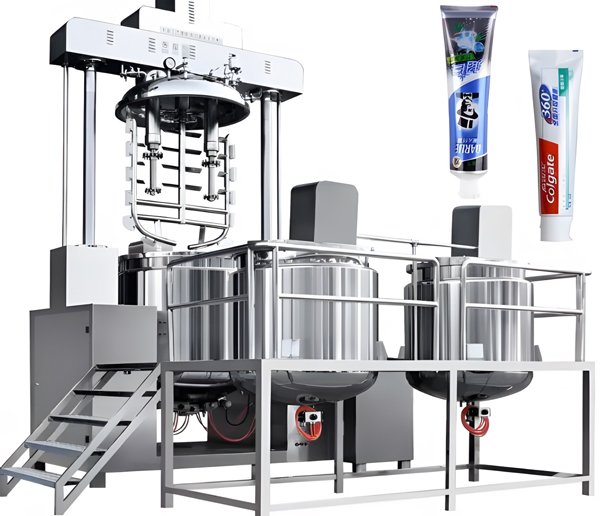Do you want to start a toothpaste manufacturing business? Well! Because of its high demand, it has a very stable market. However, its manufacturing doesn’t involve just mixing of ingredients, but you have to ensure the efficacy of the product. That’s where machines come in handy.
Now, you might be asking what machines are used to make toothpaste. If so, then keep reading this blog. Whether you are simply a curious toothpaste buyer or want to start a toothpaste production line, here we’ll discuss all the equipment needed in toothpaste production in chemical industries. So, be with us!
1) Overview of Toothpaste Manufacturing Process
Toothpaste is among the everyday used products helping to keep our teeth clean and fresh. Well! You might take this product slightly, but you know it undergoes a series of processes before reaching our homes. Let’s have a quick overview of the toothpaste manufacturing process!
i) Ingredient selection and measurement: First of all, the different types of toothpaste require different ingredients in scaled quantities for their preparation. Let’s have a quick look at the table below of common ingredients, and understand why they go into your toothpaste!
| Types of ingredients | Examples | Role |
| Base (Solvent) | Water | Holds all other components together as a carrier. |
| Humectants | Glycerin, Sorbitol | Sustain the moisture level of the paste, keeping it from drying. |
| Thickening Agents | Cellulose gum | Provides a smooth, stable texture to the toothpaste. |
| Abrasives | Hydrated silica, Calcium carbonate | Gently scrubbing the teeth to eliminate stains, plaque, and food residue. |
| Preservatives | Sodium benzoate, Methylparaben | Prevents the growth of bacteria or mold inside the toothpaste tube. |
| Coloring Agents | Food-grade dyes (e.g., FD&C Blue No.1) | Used to enhance the visual appearance of the toothpaste with a fresh look. |
| Active Ingredients | Sodium fluoride, Sodium monofluorophosphate | Helps in strengthening enamel and protects from cavities and tooth decay. |
ii) Mixing and blending: Once you select and measure all the ingredients, the next step is mixing. For this purpose, you need to place base ingredients like water, humectants, and thickening agents in blending machines.
Different mixing blades are used, which we’ll discuss in detail in a later section. They efficiently blend all requisite components, creating a thick paste.
iii) Deaeration: Next, after the addition of preservatives, coloring agents, etc, you also need to check if there is any air bubble in the paste. That’s why it undergoes deaeration to remove trapped air from the mixture.
iv) Filling & packaging: Finally, the paste is filled in tubes via machines, also adding labels. This step is carried out via machines to ensure speed and also that products remain clean and uncontaminated.
Well! On Quora, a user named Scott Frey has shared an interesting history behind toothpaste. He shared that its usage first started around 5000 years ago in the Egyptian era. Ingredients that were used include a powder of ox hooves’ ashes and burnt eggshells that was combined with pumice.
Then, in 1800, a dentist added soap to make it foamy, and in 1873, Colgate paste was first mass-produced in jars.
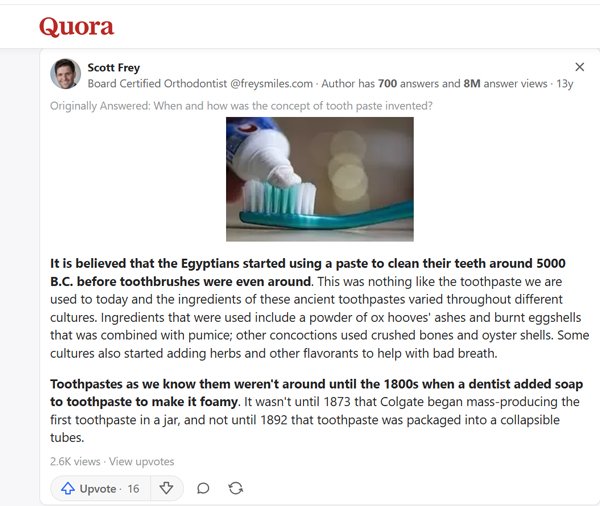
2) Emulsifying Equipment in Toothpaste Production
Now, you might understand that toothpaste making is more than an ingredient mixing task. You need special emulsifier machine (also called high-shear mixer) to ensure a steady and smooth process. Now, you might be wondering what machines are used to make toothpaste? For instance, we all know that water and oil never mix easily.
That’s why, here the paste goes through the emulsifying process. This emulsification process produces a stable and homogenous paste both water-based and oil-based ingredients (like flavors or essential oils). However, such an intricate process demands precision and care; therefore, the use of machinery is preferred.
So, below I’m sharing with you different emulsifying machines that help you ease the toothpaste production.
- Emulsifying Mixer vs Vacuum Emulsifying Mixer
i) Emulsifying mixers: In many factories, the workflow begins with the use of emulsifying mixers. Mechanical emulsifying mixer typically consists of a mixing tank equipped with an agitator, scraper blades to prevent materials from sticking to the tank walls, and a homogenizing head. Making use of high-speed (500 to 1500 RPM), spinning paddles and blades, they break down large articles into smaller ones. It possesses a high-speed rotating impeller or rotor-stator machines. It works under normal atmospheric pressure and uses mechanical stirring, high-shear forces, and turbulence. When the shear energy is added to the mixture, the droplet size decreases, improving the quality. There are multi-shaft mixers that add more shear forces.
You know, they also create a strong swirl which pulls the ingredients to move to the centre for thorough mixing. Some mixers have adjustable speed controls and vacuum systems to remove trapped air. They include heating or cooling jackets for temperature regulation.
However, while mixing, some microbubbles may be generated. Such bubbles can cause undesirable changes in the paste. For emulsion mixers, such flaws can be eliminated by the use of a vacuum emulsifying mixer.
ii) Vacuum emulsifying mixer: The vacuum emulsifying mixer machine consists of an emulsifying mixer boiler, a hydraulic system, a vacuum pump, a pre-treatment boiler, an electric control system, etc. A vacuum pump is a vital component in a vacuum emulsifying mixer, responsible for creating and maintaining the vacuum environment inside the mixing tank. Such mixers work under low pressure (0.09 MPa). Thus, they remove air during a blend cycle. By creating the vacuum effect, the air bubbles become bigger as there isn’t much pressure that pulls them down.
Thus, once they reach the top, they escape and are sucked out by the vacuum system. Also, it helps prevent the growth of bacteria, since germs need normal air pressure ( 1 atm ≈ , 0.101 MPa) to grow; however, the air pressure inside a vacuum is very low. They decrease the droplet size below 1 micron; as a result, the vacuum emulsifier produces fine emulsions. The vacuum function also improves product quality by improving texture, stability, and shelf life. In short, you get two benefits from the vacuum emulsifying mixer machines: bubble-free and safer or clearer taste.
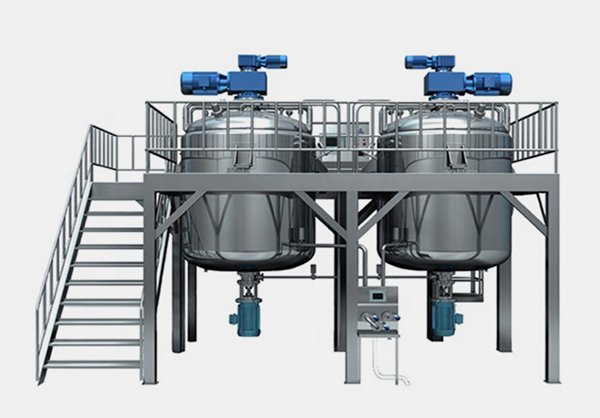
- Role of Emulsification Tanks and Heating Systems
Aright! You know all the ingredients are usually placed inside stainless steel emulsification tanks. Such tanks ensure a hygienic environment, which is required for heating and mixing, and prepare a homogeneous emulsion. Keep in mind that the solid thickeners and waxes are easier to integrate once the temperature is increased.
Thus, the temperature is placed around 60° – 75° C. This increased temperature causes the melting of solid components and reduces the viscosity (ability of liquids to flow; lower viscosity means better flow). Thus, ingredients can blend more easily.
The tanks usually cool off after mixing and heating to maintain the required texture and viscosity during packing.
If you want to buy a high-speed, stainless steel, and easy-to-operate mixing and emulsifying machine, then look no further than King Pack. We offer customized solutions meeting your business needs. These machines are also used in various large-scale manufacturing setups for making pharmaceutical ointments and luxury face cream emulsions.
| Core function | Numeric data | Key Benefit | |
| Emulsifying Mixer | Blending | 500–1500 RPM | Uniform mixing of base ingredients |
| Vacuum Emulsifying Mixer | Stabilizing | –0.09 MPa (vacuum level) | Bubble-free and longer shelf life |
| Emulsification Tank | Holding | 500–2000 L tank capacity | Clean, safe environment for mixing |
| Heating System in the tank | Melting | 60°C–75°C | Helps melt solids, reduce viscosity |
3) Tube Filling and Sealing Machines
After mixing the required ingredients to form the toothpaste. The next step is to fill the prepared mixture into tubes. While this might sound easy, it requires a combination of precision, speed, and cleanliness, which is achieved using industry-grade machines. Let’s look at this process step by step.
- Automatic Tube Filler and Sealer
Let’s begin by discussing the function of an automatic tube filling and tube sealing machine. This machine does two important jobs:
- The tube filler machine fills the tube with a precise dosage of toothpaste.
- Tube sealers seal the open end so it retains the filled toothpaste and prevents any leakage or drying.
Because of automation, the machine is capable of filling and sealing anywhere between 30 to 120 tubes per minute, based on the brand and machine settings.
Furthermore, these machines use sensors to ensure that the placement and filling of the tubes are correct. The best part is that if the tube is missing or is placed in a tilted position, the machine halts to bypass any possible spills. This increases the efficiency of the process and minimizes waste.
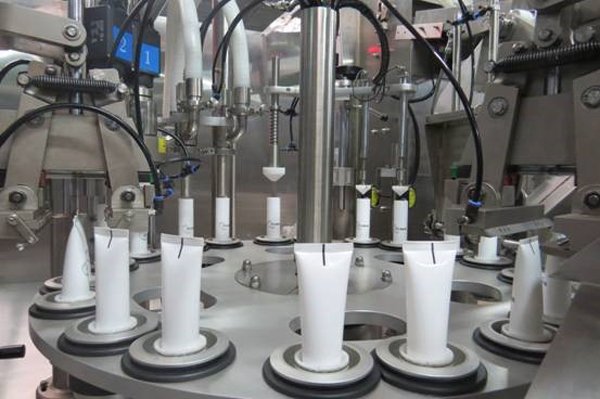
- Plastic Tube Filling and Sealing Solutions
Next, you know modern tubes of toothpaste are made of plastics like polyethylene (PE) or laminated plastic-aluminum layers. These materials are lightweight, flexible, and safe for your toothpaste.
Because of the adherence to shape and flexibility, the plastic tube filling machines utilize smooth nozzles that prevent tearing and overfilling. Interestingly, each tube, on average, contains 75 to 150 grams of toothpaste.
Moreover, these systems are outfitted with a batch printer or date coder that stamps the manufacturing date and batch number on the tube. This feature enables companies to monitor large batch sizes and cite it for quality issues later.
Now, the last step is sealing the tube, and it is arguably the most important. To keep the toothpaste fresh and free of contaminants, manufacturers either use heat sealing or ultrasonic sealing, depending on the materials.
- Heat sealing: As the name suggests, tube heat sealers use temperatures of about 120°C and 150°C. This heat usually first melts the top of the tube and then presses it with hot jaws. It’s best for regular plastic tubes. For example, heat sealing can seal as many as 100 tubes in a minute.
- Ultrasonic sealing: However, this technique is more sophisticated. It uses inaudible sound waves in the range of 20–40 kHz to create heat and friction inside the tube, which is more advantageous than using heat directly. It is especially useful for sensitive, low-temperature materials.
The ultrasonic technique is much slower compared to heat sealing, but trust me, it helps in achieving a strong, clean seal and also minimizes product damage. Thus, no matter your tube’s material and design, both techniques will produce a reliable seal to protect the toothpaste.
4) Auxiliary Equipment in the Toothpaste Line
Now your toothpaste is ready. But that’s not enough, as looks also matter a lot. So, the product still needs to be visually appealing and professional for the store display. This is where auxiliary equipment helps you. These machines do not fabricate toothpaste, but they do aid in its proper and thorough finishing. Let us examine the two major machines utilized in this background work.
- Automatic Empty Tube Labelling Machine
Keep in mind that every empty tube requires some form of labeling. This label must contain the brand, the ingredients, and the safety information. This is the reason why the automatic tube labelling machine is crucial. Using rollers, glue, and sensors, this machine applies labels precisely onto every tube.
Instead of labeling each tube manually, which is tedious and time-consuming, this machine can label up to 120 tubes every single minute. This is a highly efficient technique, as it eliminates time wasting and minimizes human mistakes, such as labels being applied slanted or completely absent.
| Pros | Cons |
| Quick and productive Clearly and correctly labelled Saves on both labor and time | Expensive to implement Requires upkeep for different sizes of tubes |
- Coding and Date Printing Devices
After labeling and filling the tube, essential information, such as expiry date, manufacturing date, and batch number, needs to be added, as it is important for safety and freshness tracking. Factories employ two types of coding devices, like inkjet and laser coders.
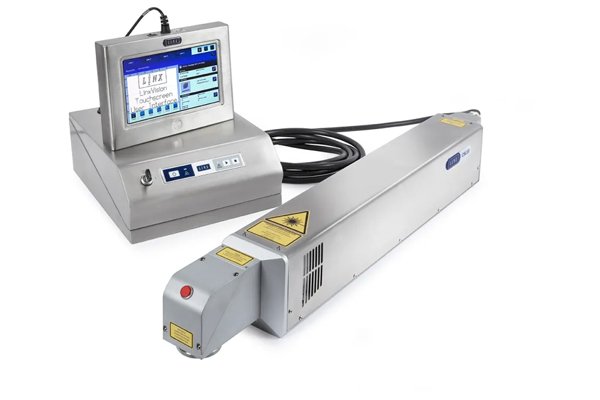
You know, each type has its benefits and limitations. So, let’s compare them for a better understanding!
| Inkjet Printer | Laser Coder | |
| Print Method | Sprays quick-drying ink | Uses focused laser light |
| Speed | 100–300 tubes per minute | 150–400 tubes per minute |
| Print Quality | Good, but it can smudge | Very sharp and permanent |
| Cost | Lower initial cost | More expensive upfront |
| Maintenance | Requires regular cleaning | Low maintenance |
| Suitable For | All materials | Works best on hard surfaces only |
Well! In the next section, we will look at how these machines seamlessly integrate to automate and streamline the entire process.
5) Filling Lines and Systems for Mass Production
After making the final adjustments and completing the toothpaste’s preparation, the next step is large-scale packaging. At this stage, filling lines and systems become crucial as they enable filling thousands of toothpaste tubes with speed, accuracy, and ease.
- Integrated Filling and Sealing Lines
As the name suggests, integrated filling and sealing machines start with empty tubes and work in a well-synchronized sequence. They automate filling, capping, and label verification, increasing productivity across the board.
Automation increases productivity, and integrated systems work without breaks, allowing these systems to process up to 120 tubes in a minute. Reduced workforce translates to enhanced productivity, and estimating the chances of human errors. ‘
- Filling Systems and Custom Line Configurations
Next, each business has its own filing needs. You can use custom filling systems. In contrast to standard systems, these let you select configurations based on your product, tube size, or space available. For example, some systems use a rotary counter fill for curved tubes while others use a linear configuration to conserve space.
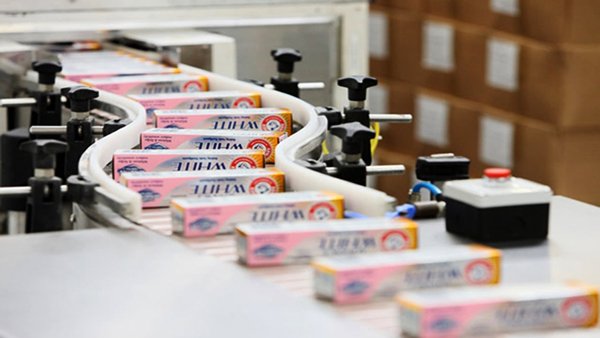
6) Ensuring GMP Compliance in Toothpaste Equipment
Now, all is set, but you also have to be familiar with GMP ( Good Manufacturing Practice) rules. These GMP compliance services are specific laws that govern your toothpaste factory to ensure every tube is correctly manufactured, safe, and hygienically packed. These rules are important not just for toothpaste hygiene but also for the shelf life of the product.
? Easy-to-Clean Equipment: First of all, GMP standards state that toothpaste manufacturing machines should be easy to clean. If machines are not easy to clean, used paste residues can harbor bacteria and lead to contamination.
This is why most toothpaste equipment is made of stainless steel. They do not rust and can be cleaned quickly and thoroughly. This enables you to keep the hygiene at every stage of the process.
? Built-in Safety Checks: Next, safety measures are another vital aspect of the GMP laws. For instance, they should be equipped with smart sensors and software to avoid mistakes. This is because sensors are able to check for paste weight, temperature, and the system, and even the speed; thus, everything is monitored in real-time.
The amazing thing is that if anything seems off, the system safely switches off. This way, problem detection is done in advance to avoid tampering with the entire batch.
? Clean and Organized Work Area: Additionally, Good Manufacturing Practices, or GMP, concentrates on maintaining your workspace orderly and clean. For instance, during filling and sealing processes, tubes should be in one orderly direction.
Such an order minimizes possible mix-ups, hold-ups, and contamination. Smooth and safe production line processes are achieved this way.
7) Conclusion: Choosing the Right Equipment for Reliable Toothpaste Production
After all the above discussion, we have concluded that every machine used in toothpaste production plays a significant role, whether it is mixing or labelling. That’s why, whether you’re making toothpaste on a small scale or running a large-scale business, you should wisely choose every piece of equipment.
At King Pack, we offer filling, capping, labeling and bottle filling machines that can be fully customized to integrate seamlessly with your existing production line. We care about customer satisfaction. So, get in touch with us today for the best offer!


